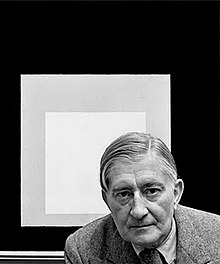-Josef Albers
Josef Albers has painted hundred of canvases with the same composition but in different hues, value and saturation all to show the instability and relativity of color perception. He explained his motivation:
"They (the colors) are juxtaposed for various and changing visual effects... Such actions, reaction, interaction...is sought in order to make obvious how colors influence and change each other; that the same color, for instance-with different grounds or neighbors-looks different...Such color deceptions prove that we see colors almost ever unrelated to each other."
Josef Albers (March 19, 1888 – March 25, 1976) was a German (born) American artist and educator whose work, both in Europe and in the United States, formed the basis of some of the most influential and far-reaching art education programs of the 20th century. He worked as a school teacher from 1908 to 1913. In 1918 he received his first public commission, Rosa mystica ora pro nobis, a stained-glass window for a church. He studied art in Berlin, Essen, and Munich, before enrolling as a student at the prestigious Weimar Bauhaus in 1920. The director and founder of the Bauhaus, Walter Gropius, asked him in 1923 to teach then in 1925, Albers was promoted to Professor.
This piece uses one primary shape and 4 colors, but invokes great thought along with the realization of color relationships and tonal value - making it a great addition to the exhibit.


No comments:
Post a Comment